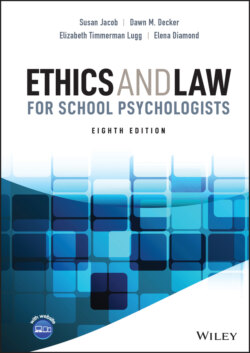Читать книгу Ethics and Law for School Psychologists - Susan Jacob - Страница 71
Equal Protection Clause
ОглавлениеThe equal protection clause provides that no state shall “deny any person within its jurisdiction the equal protection of the laws.” Beginning in the years of the Warren Court (1953–1969), this clause has been interpreted to mean that a state may not make a free public education available to some children but not to others in the state and that the state must provide equal educational opportunity to all citizens within its jurisdiction. In the 1954 landmark Supreme Court ruling Brown v. Board of Education, the Court made it clear that each state must provide equal educational opportunity to all children in its jurisdiction regardless of race. The Court ruled that the assignment of Black children to separate public schools is a denial of equal protection under the 14th Amendment of the Constitution. In two important subsequent cases, Pennsylvania Association for Retarded Children v. Commonwealth of Pennsylvania (1971, 1972) and Mills v. Board of Education of District of Columbia (1972), the courts ruled that exclusion of children with handicaps2 from public school education is a denial of equal protection.
In the years since Brown, the courts have sent an unwavering message to the states that they have a duty to provide equal educational opportunities to all children regardless of race, color, national origin, immigration status, native language, sex, and disability under the 14th Amendment. The 14th Amendment equal protection clause also protects the school access rights of pregnant and married students.
